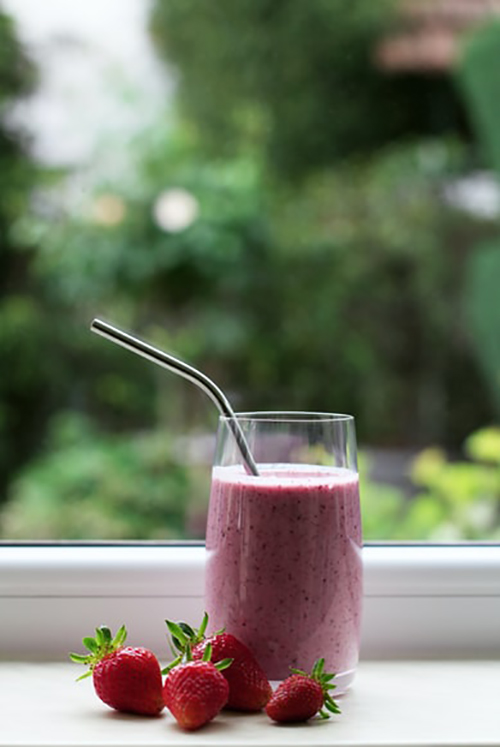Many people hail Kratom for its possible health benefits. Though scientists know very little about it, what they’ve discovered is enough to reveal what the humble herb can do.
Manufacturers are taking advantage of its popularity and producing various Kratom items that deliver the same benefits, although they’re different. Every Kratom user can agree that the plant has an unpleasant and earthy taste.
Consumers who’ve used unique properties of White maeng da kratom for some time may be okay with this taste, but beginner Kratom users find it unbearable. Thankfully, there are some Kratom-infused drinks that you can enjoy. They deliver Kratom’s benefits minus the unsettling flavor. The post below explains more.
What Exactly is Kratom?
Kratom, also referred to as Mitragyna speciosa, is a tree that grows in Southeast Asia. It’s close to coffee- they both belong to the Rubiaceae clan. Natives in Southeast Asian countries like Papua New Guinea, the Philippines, Malaysia, and Indonesia have brewed it to manage pain plus, some illnesses such as:
- Diarrhea
- Coughs
- Gastric issues
The plant owes its robust characteristics to the alkaloids it has.
Which are These Alkaloids?
Alkaloids are compounds with unmatched medicinal characteristics. Kratom’s leaves have a high alkaloid concentration. As per investigators, the herb has forty various compounds. Some of these (non-active) alkaloids are:
- Corynoxine A
- Paynantheine
- Speciogynine
- Mitraciliatine
- IsoPaynantheine
Twenty-five of these are alkaloids. You can find most alkaloids in tiny amounts, but this doesn’t change that they’re powerful.
Two main alkaloids stand out from the rest: 7-hydroxy mitragynine and mitragynine. 7-hydroxy mitragynine accounts for approximately two percent alkaloid content, while mitragynine makes up at least sixty percent of the content. Their concentration differs according to individual strains.
Kratom Strains
There may be various Kratom threads on the market, but the herb exists in three main strains:
- Red Vein Kratom- plus, it’s the most popular strain.
- White Vein Kratom- it’s a stimulant or mood enhancer.
- Green Vein Kratom- it lies between the red and white veins. It has mild mood-enhancing and energy-boosting characteristics.
The alkaloid mitragynine is responsible for Kratom’s stimulating impacts. Therefore, you’re more likely to find a higher strain of it in the white and green strains. On the other hand, 7-hydroxy mitragynine may be less prevalent in the plant, but it’s stronger. It causes Kratom’s sedative and soothing characteristics. Then, it comes as no shock that it’s more prevalent in the red strain.
How Kratom Functions
Mitragynine and 7-hydroxy mitragynine have a high affection for Mu-opioid sense organs in the brain. When you ingest Kratom orally, your blood absorbs it. It then reaches the brain sense organs. It can cause energy or sleepiness upon activation.
Mitragynine resembles the alpha-2 adrenergic receptor antagonist. It links to the receptor and inhibits its impacts. It releases particular chemicals that improve blood flow and soothe the blood vessels.
7-hydroxy mitragynine is forty-six times stronger for the mu-opioid sense organs than mitragynine, as per evidence.
How Long Kratom Remains in Your System
Its effects last for several hours. Depending on the strain and Kratom dosage, it could be anywhere from two to eight hours for its impacts to wear off by half. This is known as the Kratom half-life.
However, the average usually is approximately four to five hours. Kratom doesn’t leave your body entirely during this period. It takes at least a day for your body to eliminate it. Yet, tiny quantities of it stay in your structure for at least a week.
Kratom-Infused Drinks You Should Try
Here are some Kratom-infused beverages that’ll keep you healthy and refresh you at the same time:
Kratom Coffee
Kratom pairs seamlessly with coffee since the two are related. Darker roasts’ deeper taste profiles can improve Kratom’s earthy flavors while balancing the natural sourness. You can add heavy whipping cream for a smoother taste.
Hot Chocolate and Chocolate Milk
Cow’s milk has an unmatched neutralizing impact on Kratom’s natural tannins. This effect helps in lowering the bitterness that users link to Kratom. You can use lactose-free milk for similar benefits if you’re lactose intolerant.
Suppose you’ve got dairy intolerance, or you’re a vegan. No problem, you can try Kratom with non-dairy options like:
- Almond milk
- Coconut milk
- Soy milk
- Cashew milk
Tea With Kratom
Kratom pairs perfectly with different teas. Brewing it into tea is among the most common recipes. Consider mixing your Kratom tea with other tea beverages if you’re looking to hide Kratom’s strong taste.
Some excellent tea options to match Kratom with:
- Oolong
- Mint
- Hibiscus
- Jasmine
- Chamomile
Pineapple Juice
Pineapple juice contains beta-carotene and Vitamin C. These antioxidants replenish and refresh the skin. It also has citric acid that improves the Kratom alkaloid’s strength, making it suitable to pair with Kratom powder.
Lemonade
It may sound like a wrong move to mix Kratom with lemonade because of the drink’s acidic nature. On the contrary!
The high acidity and sugar and lemonade do an excellent job of hiding Kratom’s taste and offering that relaxing and refreshing feeling that only a glass of lemonade can deliver, especially on a sunny afternoon.
Conclusion
Kratom-infused drinks deliver Kratom’s benefits pleasantly and refreshingly. The key is to get your measurements correct. If you’re new to Kratom, consider adding half a teaspoon of the powder into your drinks first of all. And, don’t drink too much of the drinks. A glass per day is enough. You can increase intake once your body gets used to it.




